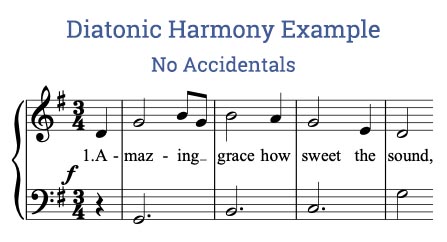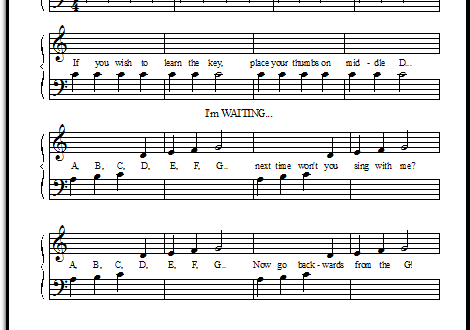
Harmonic minor. Melodic minor.
Contents
What are the popular modifications of the minor to give it a special shade?
With the development of music, the minor mode changed, adding new “colors” to the sound of the already established natural minor. The changes consisted in the appearance of accidentals in front of some steps and, as a result, a change in the intervals for these steps. As in the case of the major mode, the degree of attraction of unstable sounds to stable ones changed. As a result, two more types of minors appeared: harmonic and melodic.
Consider, as examples, minor modes based on the natural A minor. This mode is convenient for studying, since it does not have accidentals in the key. The figure below shows the natural A minor:

Figure 1. Natural minor scale
harmonic minor
The difference between the harmonic minor and the natural minor is the increase in the 7th degree. This greatly enhances the attraction of the rising introductory sound to the tonic.
Harmonic minor intervals represent seconds. Here is their order: b.2, m.2, b.2, b.2, m.2, SW.2, m.2. The figure shows the harmonic minor:

Figure 2. Harmonic minor
Compare the sound of the seventh degree of the harmonic and natural minors. The inclination of the specified step towards the tonic is so clearly intensified that you can easily hear it.
melodic minor
The difference between the melodic minor and the natural one is the increase in the VI and VII steps. Increasing the VI step allows you to more evenly arrange the steps in the upward movement:

Figure 3. Melodic minor
In a downward movement, the melodic minor is used quite rarely (as well as the harmonic). This phenomenon is explained simply: there is no need to increase the inclination towards the tonic (in the figure it is indicated by a unit in brackets), if we go from it, but we need to return the inclination of the VI degree to the V degree.
Note that the keys of the minor mode are related in the same way as the keys of the major mode. In the formation of minor keys, the same basic and derivative steps are used as in the major mode.
Parallel Keys
Parallel keys are those major and minor keys that have the same accidentals at the key. For example, parallel keys would be C major and A minor. Both keys have no signs at all at the key. Or another example: G major and E minor are also parallel, because both keys will have F-sharp at the key.
Note that the minor parallel to major has the tonic one minor third lower. This regularity can be used when searching for a tonality parallel to major.
Both in majors and in minors, accidental signs in melodic and harmonic modes are considered “random”, they are not carried out to the key. They are placed in a piece of music only where necessary.
The number of major and minor keys are the same: there are 15 of them each. The names of minors are formed according to the same principle as majors. For the letter designation of the minor key, they write “moll” or only the first letter: “m”. Those. A-minor is denoted as A-moll, or Am.
Results
You got acquainted with harmonic and melodic minors.





